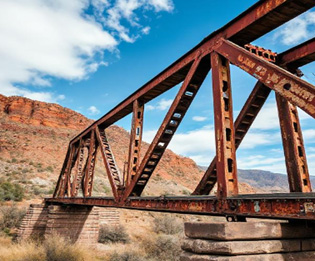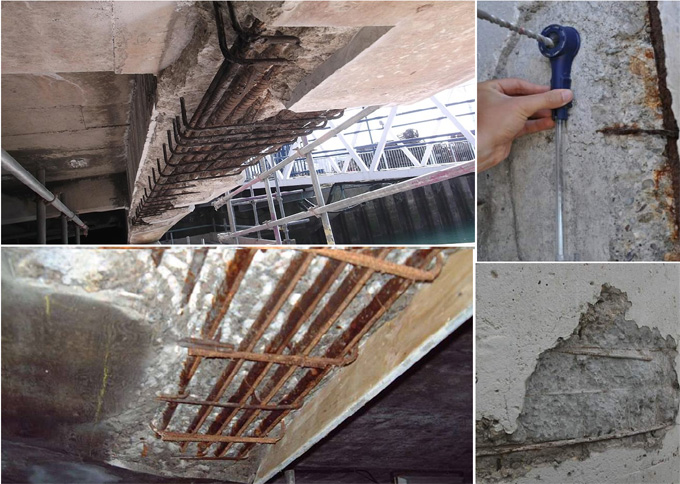
Methods of Prevention of Rusting of Iron

Rust is the reddish-brown object that has plagued ferrous metals over the years. Rust impacts the metals that contain iron. Rust is the naturally occurring process in which iron in the metals reacts with the moisture and oxygen in the environment. The structural integrity of the metals containing iron has been impaired because of the rust, and the repairing procedure is costly and time-consuming.

The metals which does not contain any iron materials are not prone to rusting. Steel products contain iron, which is prone to rusting. Whereas rusting does not occur in stainless steel. This is because stainless steel contains chromium, which reacts with the oxygen before iron. Thus, the chromium oxide layer helps to prevent the reaction between iron and oxygen and prevents rusting of the product. There are several other metals, including copper, bronze, and aluminium, which are also not prone to rusting because of contain no or little iron.
Impacts of rust
Rusts can negatively affect the iron in several ways, which are:
Impacts structural integrity
The metal structure is weakened over time because of the rust, which impairs the strength and durability of the metal. The materials are lost from the metal surfaces, which makes the metal more prone to deformation and the load failure point. The localized corrosion has occurred on the metal surface because of the rust, which leads to faster deterioration and more concentrated damage to the metal.
Enhanced cost and reduced lifespan
The lifespan of the metal products has also been reduced because of the rust. Rust leads to degradation of the material. Maintenance efforts and significant expenses are required for mitigating the effects of rust.
Impacts aesthecity
The visual appeal of the metal surfaces has also been impaired because of the reddish-brown appearance of the rust, thus, the aesthetic quality of the metal products has been impaired because of the rust.
Key tips for preventing rust on iron
There are several ways to prevent rust on iron, which are as follows:
Application of dry coating
Dry coating has been made to protect products from rust, as it acts as a protective barrier. The dry coating can be applied through dip, spray or wash. This can be applied to enhance the protection level of the metal products.
Application of oil
Oil helps to lubricate the metal parts. This lubrication feature helps to allow the metal parts to move with less friction. In addition, oil acts as a protective barrier to rust in the metals. Due to the application of oil in the metal products, the iron in those metals can not react with the moisture, thus, oil prevents rusting of that metal.
Application of alloy
The alloys have been created from carbon and iron, which can be added to different metals that have corrosion-resistant features. In these types of steel alloys, the rusting process occurs more slowly compared to normal steel.
Galvanization
In this process, a zinc coating has been applied over steel or iron. This is a cost-effective process for preventing rust. Though there are some limitations of the galvanization process. The zinc coating does not resist the harsh environmental forces, such as salt or acid rain. The outward appearance of the metal can also change because of the galvanisation. The extra layer of galvanizing covers the parts of the metal products.
Application of paint
The paint over the metal object also acts as a protective layer and helps to prevent moisture. Thus, the application of the paint helps to slow down the rusting process. In this context, the oil-based paint will be the best choice for preventing rust. It also needs to ensure that there are no weak spots in the painted layer, as this can lead to the start of rusting.
Blueing process
This process can create a new layer on the metal product, which is similar to rust. This layer is less damaging as compared to the rust. The new magnetite layer is known as black iron oxide, which helps to give a blueish appearance. This process works better in the case of the application of oil in the metal products when it is done on a regular basis.
Application of powder coating
The powder coating has been made to be applied as a protective layer against rust. The layer of powder coating also helps to prevent moisture as well as prevent rust. In this case, it also needs to ensure that there is no exposure of the metal, which can be prone to rust.
Vapor corrosion inhibitors (VCI) Packaging
This is one of the easy-to-use and dry packaging options which helps to protect metal and metal parts from rust. VCI is a chemical compound which helps to protect ferrous and non-ferrous metals from rust.
To learn more, watch the following video tutorial.
Video Source: SPM Malaysia IPTV
This helps to create a shield of protection on the metal surface, which can displace the moisture and eradicate rust. There are no requirements for the application of oil, grease, or any other protective coatings while using the VCI packaging.


